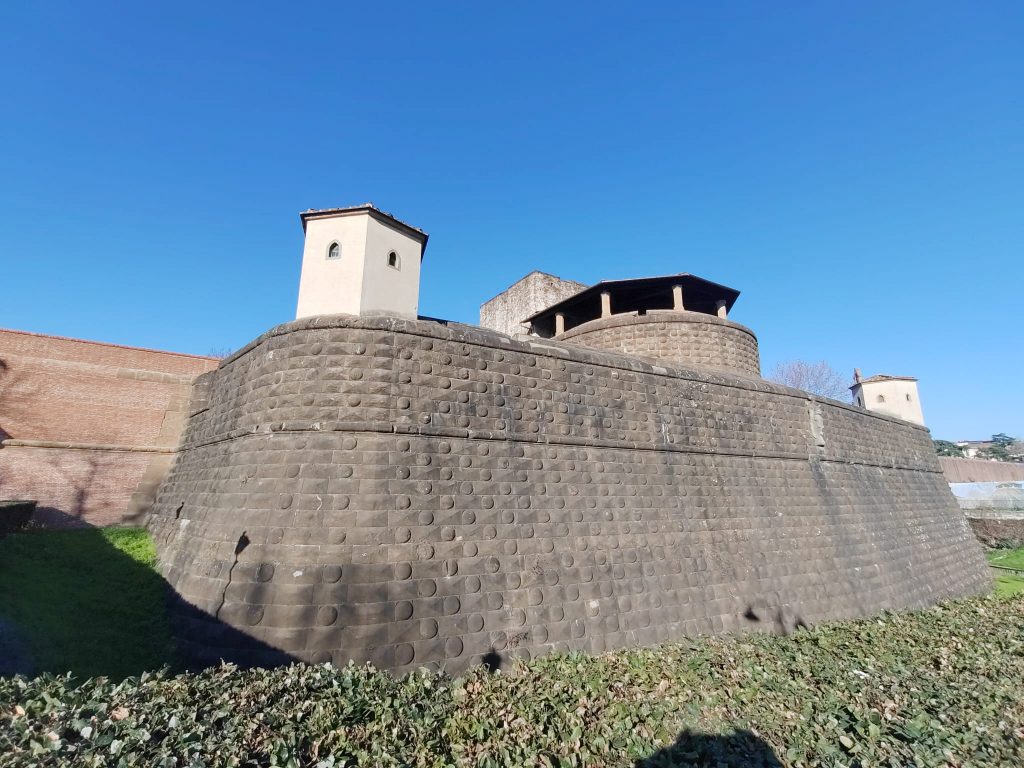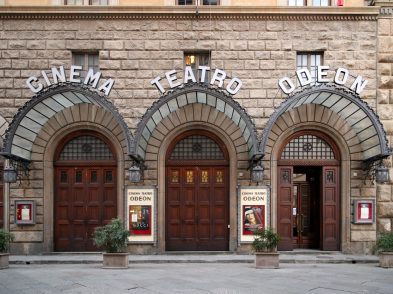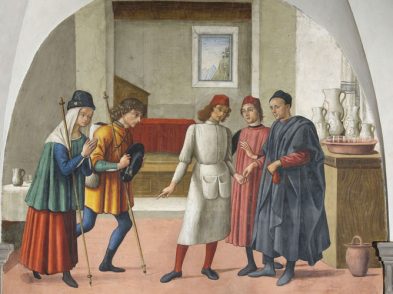January 2024 saw the beginning of yet another busy year at the Saint John the Baptist Fortress, better known as the Fortezza da Basso (the Lower Fortress) after the Forte di Belvedere was constructed on higher ground in 1600. Since 1967, it has been the largest congress and exhibition centre in Florence, just a short walk from the Santa Maria Novella train station.

This 80,000 square-metre, pentagon-shaped complex, 55,000 square metres of which benefit from roofs, is divided into pavilions and other buildings from varying eras. The fortress is encompassed by a kilometer and a half long wall, five bastions, an armoury, foundry, arsenal, moat and a maze of underground cellars spread over 10 hectares. In places, the edifice is studded with what look like sawn-off stone cannon balls, reminiscent of the balls on the Medici coat of arms. Not only the largest historic monument in Florence, at the time it was also the first fortress of modern military conception to incorporate defense structures built specifically to withstand cannon fire and other long-term sieges.
The 1967 redevelopment of the site brought to light vestiges of the 13th-century Faenza gate, which had been part of the second circle of the city walls, a fortified tower and evidence of the original course of the Mugnone stream. The Spadolini Pavilion, which was constructed between 1974 and 1976, was designed by architect Pierluigi Spadolini (1922-2000), the brother of the Florentine politician, historian and journalist Giovanni Spadolini. Today, it houses a branch of the Opificio delle Pietre Dure, where restoration and scientific laboratories carry out work dedicated to cultural heritage preservation. It was announced in early 2023 that the Cavaniglia Pavilion, inaugurated in 1997, will be demolished and rebuilt, maintaining a total surface space of 3,600 square metres with exhibition spaces, a garden roof, squares and walkways with panoramic views of the city. Expected to take up to five years to complete, the project is estimated to cost in the range of 20 million euro.
The Fortezza da Basso was built between 1534 and 1537 by the first hereditary Medici to rule Florence, Duke Alessandro de’ Medici (1510-37), nicknamed “the Moor” because of his relatively dark complexion. He ordered the construction following the terrible bloodbath of the Siege of Florence between October 1529 and August 1530, which had brought about the demise of the Florentine Republic and had placed him on the throne. Military architects Pier Francesco da Viterbo and Antonio da Sangallo the Younger drew up the plans for what was initially called the Alessandria Castle (Castello Alessandria) and employed 1,500 to build the stronghold. It was designed to accommodate troops, shelter the ruler and his entourage in case of insurrection, and to intimidate anyone who was considering a revolt because Alessandro was more concerned with protecting his power from within rather than from external forces. To ensure the work progressed to his liking, he was often seen in person at the building site.
Despite thorough attention to his personal safety, Alessandro was lured to his death by his distant cousin and friend, Lorenzino de’ Medici, known as “Lorenzaccio”, on the night of January 6, 1537. Lorenzaccio told Alessandro, a known womanizer, that a beautiful widow wanted to make love to him. Unarmed and alone as he waited for her, Lorenzino and his servant, Piero di Giovannabate, nickname Scoronconcolo, stabbed Alessandro to death six times. The assassin justified his deed by stating he had killed Alessandro for the Republic of Florence. The provisional government quickly declared Lorenzino a traitor and had a disparaging painting of him hanging upside down by one foot displayed on the Fortezza da Basso. They also put a bounty on his head, looted his home and had a road dubbed the “Traitor’s Alley” built within its ruins. Without the support from the anti-Medici camp he had expected, Lorenzino fled to Venice, where Emperor Charles V finally vindicated the death of Alessandro, his son-in-law, by ordering his death in 1548.







